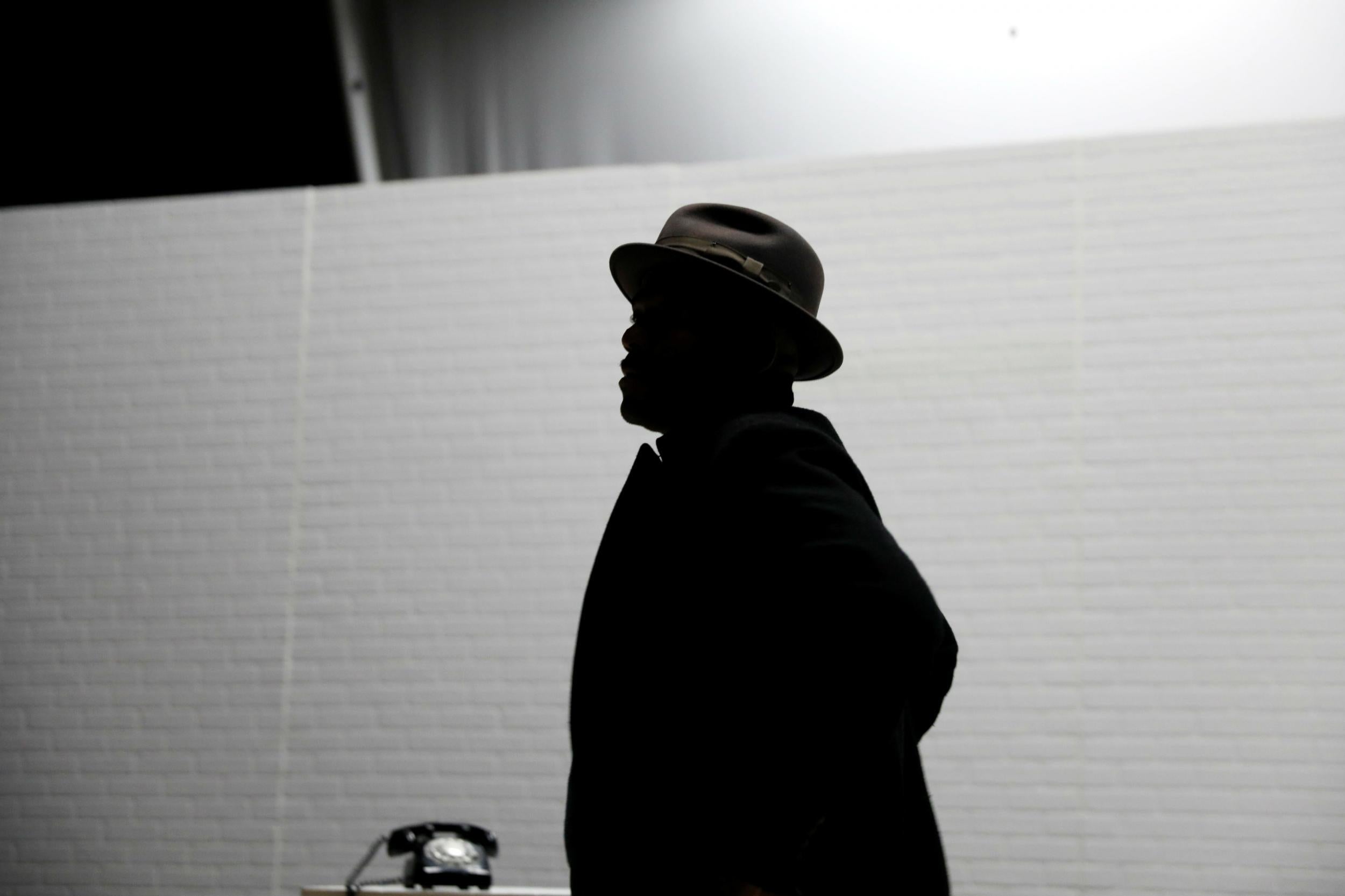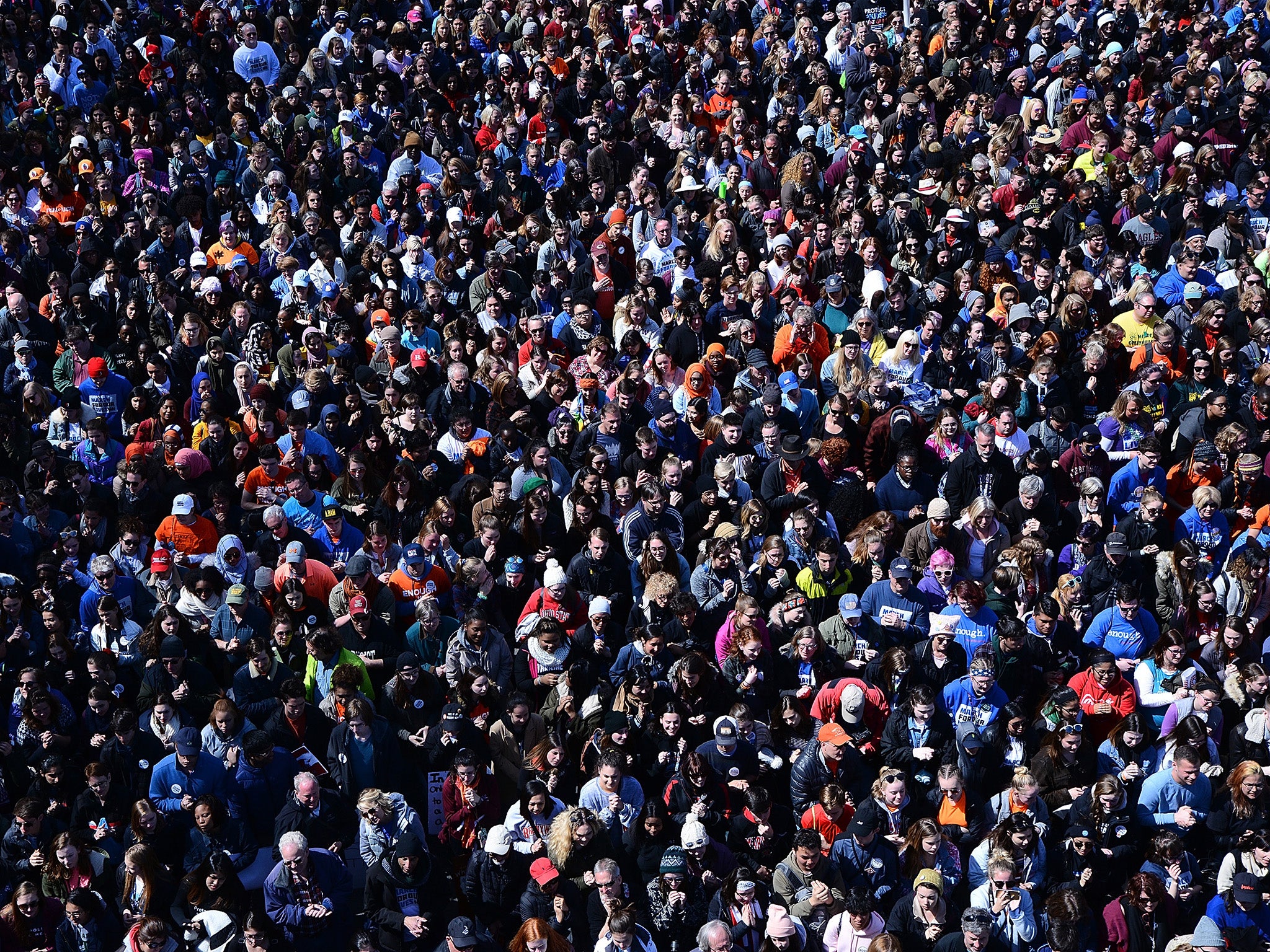Fifty years after the slaying of Martin Luther King Jr, the spirit of protest and resistance in America is alive and well
If King could see America now, he would be disappointed that the country he wanted to redeem remains so far adrift from so many of the principles espoused by its founding fathers and papers. But perhaps he would be encouraged that it has found the disgust finally to mobilise

Your support helps us to tell the story
From reproductive rights to climate change to Big Tech, The Independent is on the ground when the story is developing. Whether it's investigating the financials of Elon Musk's pro-Trump PAC or producing our latest documentary, 'The A Word', which shines a light on the American women fighting for reproductive rights, we know how important it is to parse out the facts from the messaging.
At such a critical moment in US history, we need reporters on the ground. Your donation allows us to keep sending journalists to speak to both sides of the story.
The Independent is trusted by Americans across the entire political spectrum. And unlike many other quality news outlets, we choose not to lock Americans out of our reporting and analysis with paywalls. We believe quality journalism should be available to everyone, paid for by those who can afford it.
Your support makes all the difference.Martin Luther King Jr stood before congregants jammed into the Mason Temple in Memphis on 3 April 1968 and told them never to forget their duty to demand that their country live up to the principles it professed to stand for – social justice, freedom and equality – and that whenever it fell short they should rise up in protest (non-violent, of course) and demand change.
“We have an opportunity to make America a better nation,” King said in a largely extemporised, 40-minute-long sermon. “All we say to America is, ‘Be true to what you said on paper’.”
By 1968, King was speaking not just about people of colour, but about injustice and oppression wherever it existed in America. His wider concern: economic oppression. “What does it profit a man to be able to eat at an integrated lunch counter if he doesn’t earn enough money to buy a hamburger and a cup of coffee?” he had noted even before arriving in Memphis.
Not his most famous – that was the “I Have a Dream” in Washington in 1963 – the Memphis address was his last. The next day the minister who had emerged as America’s most visible civil rights leader in 1954 was slain by a bullet on a second-floor balcony of the Lorraine Motel.
On this anniversary, the country is plunged in painful introspection. How much closer, five decades later, is it to achieving his vision? On racial justice, it has been steps forward and steps back. On economic equality, the trend is retrograde. But on his appeal at the Mason Temple for social activism, we have better news to report. The spirit of protest in America is alive and well.
I say this with cheer. It was my sense when I first arrived here 26 years ago, that America, especially its youth, seemed to be suffering a sort of collective political and civic complacency. Strikes were rare, street demonstrations even rarer. The only great upheaval had come at the start of the decade: the 1992 Los Angeles riots after the beating of Rodney King.
Perhaps it was a time of greater contentment. In his eight years as president, Bill Clinton oversaw a period or relative prosperity and peace. Yet much injustice remained unresolved, including gender and economic. What had happened to the put this land of revolution into so deep a political coma?
George W Bush pricked the patient. The 2004 Republican convention in New York, a year after the invasion of Iraq, triggered large protests and mass arrests. Bush later drove the economic bus into the ditch, culminating in the economic downturn at the end of his second term. It was this that brought us to the moment when, arguably, the modern movement of protest and civil resistance in the US was born: the first gathering of members of Occupy in Zuccotti Park in downtown Manhattan in September 2011. Before long Occupy protestors were marching on the streets of cities across the globe. America the somnolent was suddenly America the firebrand.

Police brutality gave life to Black Lives Matter during the second term of Barack Obama, the first African American president who was meant to have given the black community less reason to feel angry not more. The shooting of Trayvon Martin in Florida happened on his watch. So too the killing by police of Michael Brown in a suburb of St Louis, Missouri.
Donald Trump took office last year and continues to have an energising effect all of his own.
What began with the Women’s March on Washington after Trump’s inauguration has grown into the “Resistance”. Sprawling but sophisticated, it is a reaction to Trump that has become the umbrella for myriad other groups, big and small, dotted across the union, all progressive in outlook. They include Indivisible, now focusing on getting people to the polls in the midterm elections (and not voting Republican). Some are organisations already with long histories like the American Civil Liberties Union (ACLU). You can be one family determined to chase Trump out of office and consider yourselves enrolled. Walk the avenues of Manhattan today and look at what people, young people above all, are wearing: buttons declaring, simply, “Resist”.
Where else have America’s streets been clogged with anger? In West Virginia, where teachers enraged by their low pay fled classrooms for days in a row last month before marching on the state legislature demanding proper reward. Now it is the turn of Oklahoma where schools have been shuttered this week because teachers have walked out. Teachers are rebelling in Kentucky and Arizona.
King’s entourage bristled with guns for his security. Yet surely, had he lived longer, America’s most famous pacifist would have added the tyranny of the gun to the list of things the country needed to rebel against. And rebellion is exactly what we saw two weekends ago when, inspired by the student survivors of the Parkland high school shooting massacre in Florida, millions took part in marches for gun control in cities across the country and even in some cities overseas.
If King could see America now, he would be disappointed that the country he wanted to redeem remains so far adrift from so many of the principles espoused by its founding fathers and papers. But perhaps he would be encouraged that it has found the disgust finally to mobilise.
“Whenever men and women straighten their backs up,” he declared on that last night in Memphis. “They are going somewhere, because a man can’t ride your back unless it is bent.”
Join our commenting forum
Join thought-provoking conversations, follow other Independent readers and see their replies
Comments